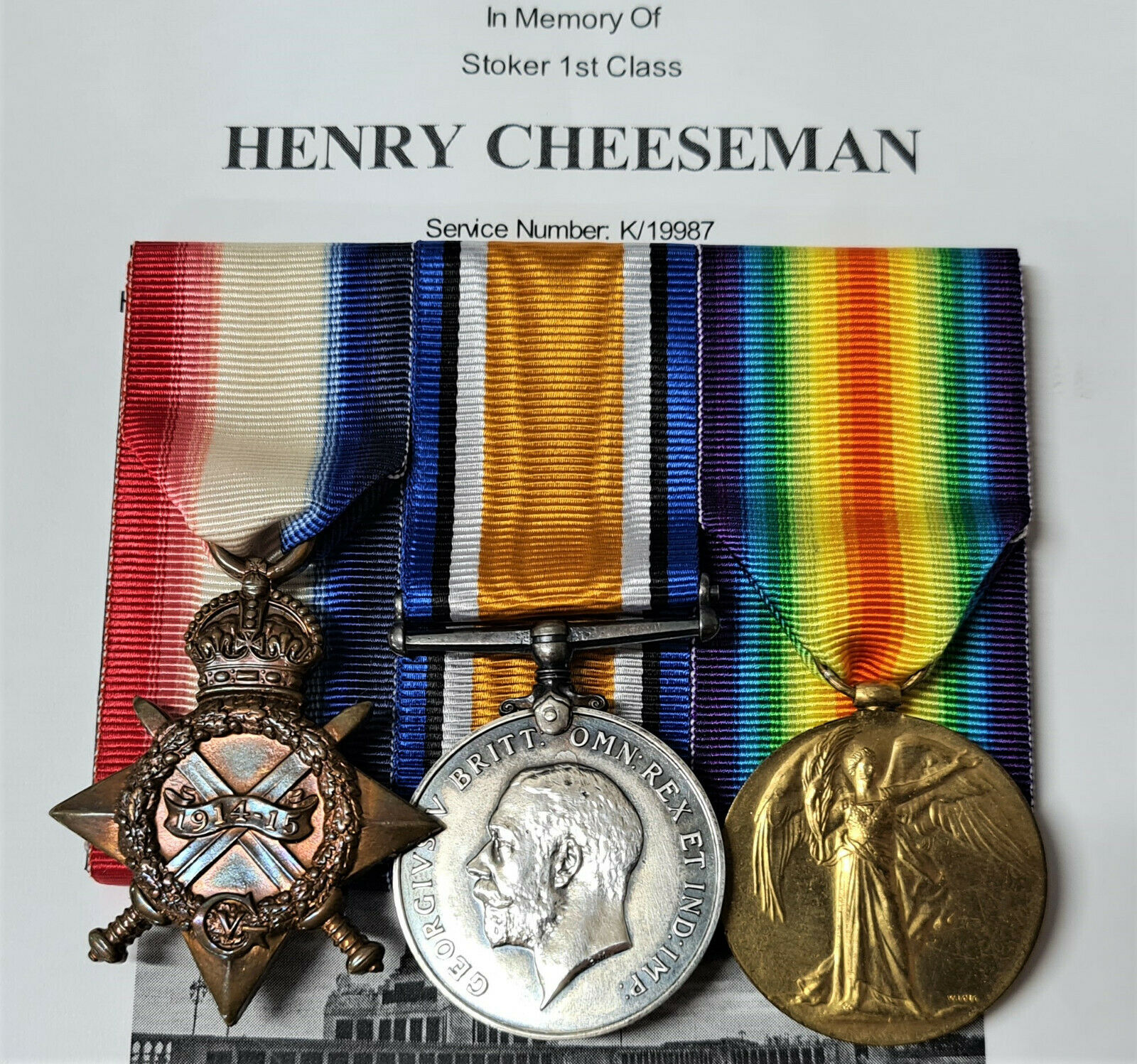Offered is a scarce WW1 trio of medals to Able Seaman S. W. Cheesmar, Royal Navy, who was killed in action serving with H.M.S. Good Hope at the Battle of Coronel, 1 November 1914
1914 – 15 Star, impressed named J.12085, S.W. CHEESEMAN (sic), A.B..R.N., British War and Victory Medals (1914 – 18), impressed named J.12085 S.W. CHEESEMAR. A.B. R.N.; Card medal box (flattened) for Victory Medal named to Cheesemar. Comes with copies of R.N. Service papers, medal roll, Commonwealth War Graves certificate, De Ruvigny's Roll of Honour, 1914-1919 extract and pension record.
Stanley William Cheesmar was born on the 13/5/1894 in Woking Surrey. A milk boy by trade, he enlisted into the Royal Navy as a Boy 2nd Class on the 9/5/1911. He served on the following H.M. ship and shore bases: Ganges II, Africa (King Edward VII Class battleship), Zealandia (King Edward VII Class battleship), Monarch (Orion-class dreadnought), Victory I & II.
H.M.S. Good hope (Drake-class armoured cruiser) 29/7/1914 – 1/11/1914
Battle of Coronel - 1/11/1914
The British force, consisting of the old armoured cruisers Good Hope and Monmouth, the light cruiser Glasgow and the armed merchant cruiser Otranto, crewed by inexperienced naval reservists and all under the command of Rear-Admiral Sir Cradock, R.N. who was in the Good Hope.
The German fleet Commanded by Admiral Von Spee consisted of five modern vessels consisting of the armoured cruisers SMS Scharnhorst and Gneisenau and the light cruisers SMS Dresden, Leipzig and Nürnberg), led by officers hand-picked by Grand Admiral Alfred von Tirpitz. Scharnhorst and Gneisenau carried eight 8.2-inch guns each, which gave them an overwhelming advantage in range and firepower; the crews of both ships had earned accolades for their gunnery before the war.
Since the British 6 in guns had insufficient range to match the German 8 in guns, Cradock attempted to close on the German ships. At 12,300 yards, Spee's flagship, Scharnhorst, engaged Good Hope while Gneisenau fired at Monmouth. The Good Hope was hit on the Scharnhorst's third salvo, when shells knocked out her forward 9.2-inch turret and set her forecastle on fire. Cradock, knowing his only chance was to close the range, continued to do so despite the battering that Spee's ships inflicted. At 6,000 yards almost half of that when the battle began, Spee tried to open the range, fearing a torpedo attack but the Good Hope continued to charged directly at the German ships which dodged out of her way. Spee ordered his armoured cruisers to concentrate their fire on the British flagship and she soon drifted to a halt with her topsides all aflame. Shortly after her forward magazine exploded, severing the bow from the rest of the ship, and she later sank in the darkness. Spee estimated that his flagship had made 35 hits on Good Hope, suffering only two hits in return that did no significant damage and failed even to wound one crewman. Good Hope was sunk with all hands, a total of 926 officers and ratings.
Cheesemar is commemorated on the Portsmouth Naval Memorial.




